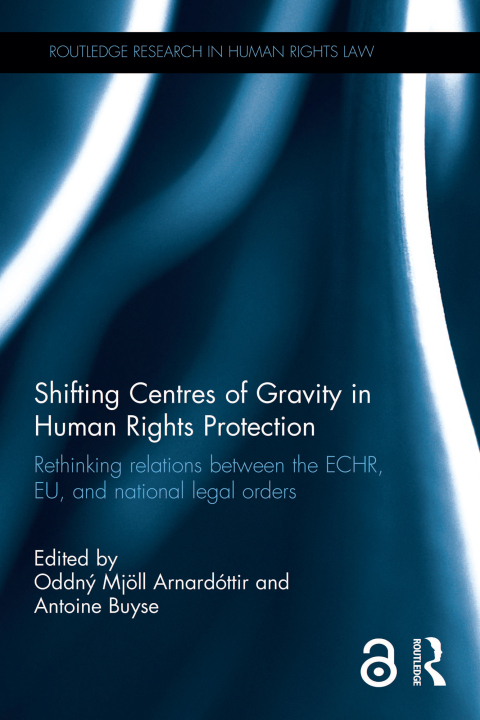Description
Efnisyfirlit
- Cover Page
- Half Title page
- Series
- Title Page
- Copyright Page
- Contents
- List of Contributors
- Acknowledgement
- 1 Introduction
- 2 The paradox of human rights protection in Europe: two courts, one goal?
- 1 Introduction
- 2 The paradox of coherence and the Charter
- 3 The paradox of autonomy and the ECHR
- 4 The paradox of accession after Opinion 2/13
- 5 Conclusion: hierarchy, complexity and necessity?
- 3 The role of the European Court of Human Rights in the changing European human rights architecture
- 1 Introduction
- 2 The scope of the Charter as compared to the ECHR
- 3 The relationship between the EU Charter and the ECHR
- 4 Opinion 2/2013 CJEU17
- 5 Case law of the ECtHR
- 6 The problems facing the ECHR
- 6.1 The political and judicial environment
- 6.2 Institutional problems of the ECtHR
- 7 Concluding remarks
- 4 The European Court of Human Rights and national courts: a constitutional relationship?*
- 1 Introduction
- 2 The role of the ECtHR
- 2.1 General aspects
- 2.2 Review of national courts
- 2.3 Review of the national legislature
- 3 The role of national courts
- 4 Conclusion
- 5 National courts and judicial disobedience to the ECHR: a comparative overview*
- 1 Introduction
- 2 Openness and internationalisation
- 3 The super-legislative authority of the ECHR
- 4 The price of success: raising barriers against the ECHR
- 5 Limits to following the European Court of Human Rights’ case law: a focus on the Italian case
- 6 Final remarks
- 6 The advisory jurisdiction of the ECtHR under Protocol No. 16: enhancing domestic implementation of human rights or a symbolic step?
- 1 Introduction
- 2 Existing advisory jurisdictions and the aims of Protocol No. 16
- 2.1 Article 47 of ECHR and reasons underlying its limited scope
- 2.2 Background, constitutional elements and models for the new advisory jurisdiction
- 2.3 The objectives of Protocol No. 16: a first step in what direction?
- 3 Characteristics of the procedure and the essence of advisory opinions
- 3.1 The optional jurisdiction and organisational flexibility
- 3.2 The contents of advisory opinions and formulation of questions of principle
- 3.3 The admissibility of requests for advisory opinions
- 3.4 Who will take part in the advisory opinion procedure?
- 3.5 The priority of the procedure
- 3.6 Reasoned opinion and separate opinions
- 4 Assessment of the impact of advisory opinions on domestic implementation and case flow to ECtHR
- 5 The overlapping contentious and advisory jurisdictions of the ECtHR
- 6 Impact on parties in the domestic proceedings pending in the requesting court
- 7 CJEU’s critical approach – a final blow to Protocol No. 16?
- 8 Conclusion
- 7 Flying or landing? The pilot judgment procedure in the changing European human rights architecture
- 1 Introduction
- 2 Origins and goals
- 3 What is a pilot judgment procedure?
- 4 The practising pilot
- 5 When to apply it?
- 6 Conclusion
- 8 The Court of Justice and fundamental rights: if margin of appreciation is the solution, what is the problem?*
- 1 Introduction
- 2 When is ‘margin of appreciation’ used (explicitly) in EU law?
- 3 Fundamental rights in EU law: interpreting the limits on competence
- 4 Fundamental rights in EU law: from policy choice to competence limit?
- 4.1 Applying margin of discretion as a policy choice: Schmidberger and Omega
- 4.2 A new constitutional framework?
- 5 Implications for the broader system of EU law
- 6 Conclusion
- 9 From flexible to variable standards of judicial review: the responsible domestic courts doctrine at the European Court of Human Rights*
- 1 Introduction
- 2 Standards of judicial review and comparative constitutional law: a framework
- 3 Effective and dynamic interpretation, margin of appreciation and the flexible ECtHR standards of review
- 4 Responsible courts doctrine: towards a variable standard of judicial review of domestic courts?
- 5 Responsible courts doctrine: a form of margin of appreciation?
- 6 The doctrinal weaknesses of the responsible courts doctrine
- 7 Conclusion
- 10 Speaking the same language? Comparing judicial restraint at the ECtHR and the ECJ*
- 1 Introduction
- 2 Comparing the ECHR and the EU fundamental rights regime
- 2.1 Key features of the two systems
- 2.2 To what extent is a margin of appreciation appropriate?
- 3 Towards a common language?
- 3.1 The distinction between the systemic and the normative
- 3.2 Systemic restraint
- 3.3 Normative elements of restraint
- 3.4 Overlap between systemic and normative elements of restraint
- 4 Conclusions
- 11 Squaring the circle at the battle at Brighton: is the war between protecting human rights or respecting sovereignty over, or has it just begun?*
- 1 Introduction
- 2 The margin of appreciation doctrine
- 3 Criticism of the present margin of appreciation doctrine
- 4 A modest defence of the current doctrine
- 5 Subsidiarity
- 6 Applying subsidiarity to the margin of appreciation doctrine
- 6.1 The objective of the ECtHR
- 6.2 The role of the ECtHR as a regional court in a multilevel order
- 6.3 Why a margin of appreciation? An argument from subsidiarity
- 7 Conclusion: criticisms reconsidered
- Index







Reviews
There are no reviews yet.